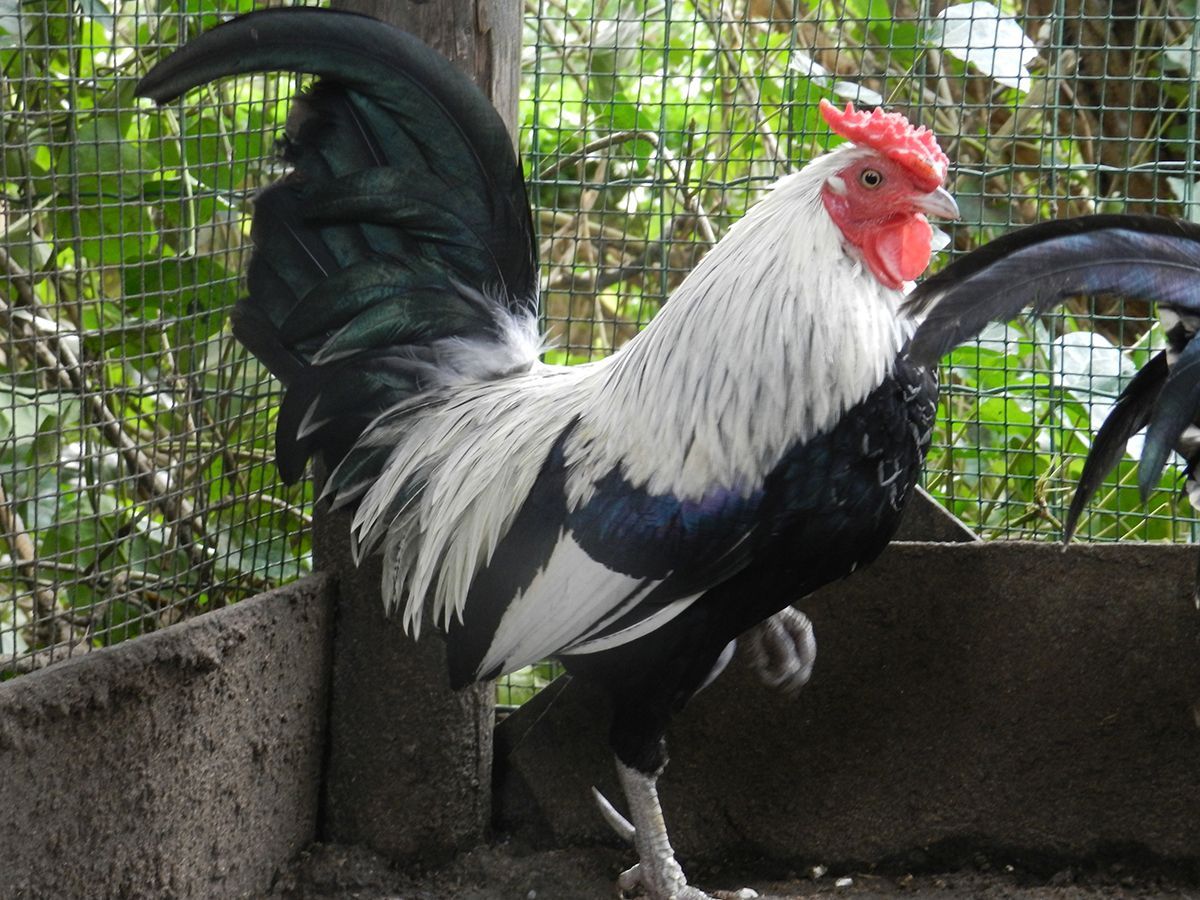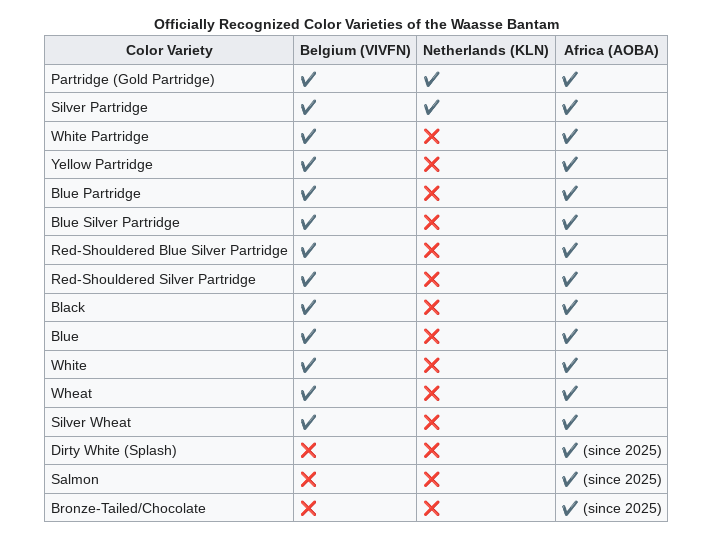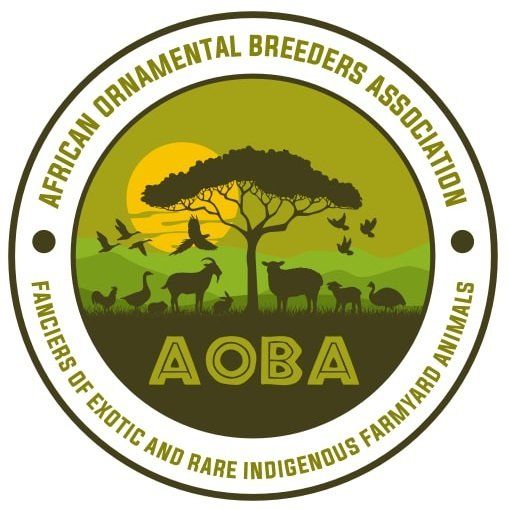
The Waas Bantam
Background
The Waas Bantam, (Dutch): Waasse kriel, (French): Poule naine du pays de Waes, Poule naine Waeslandienne, is a Belgian bantam breed originating from the Land van Waas, a region west of Antwerp. The breed is closely related to the Belgian Bantam, but is distinguished by the rose comb instead of a single comb. This small chicken breed is also popularly called "Steens Kieksken".
Like the "Belgian Bantam", the Waas Bantam is a descendant of local bantams, which were once spread across Flanders. The exact period of origin is not precisely documented, but it is suspected that the selection of the breed took place in the same period as the Belgian Bantam, namely from the beginning of the 20th century.
The Waas Bantam is a rare breed, with only a limited population in Belgium, the Netherlands and the Democratic Republic of Congo.
Appearance
The Waasse Kriel is a small and graceful chicken breed. The weight is in the same category as the Belgian Bantam:
Rooster: 550 - 650 grams
Hen: 500 - 550 grams
The back is short and flows smoothly into the tail, which is fully feathered in the rooster. The legs are blue. The rose comb is a striking feature and distinguishes this breed from the Belgian Bantam, which has a single comb.
Officially recognized color varieties
Although the partridge color is the most common, there are also a few other, albeit rare, color varieties known in the Waasse Kriel. In various countries, this breed is recognized in various color varieties. The most important associations that record these recognitions are:
- Flemish Interprovincial Association of Poultry Breeders (VIVFN) – Belgium
- Small Animal Enthusiasts Netherlands (KLN) – Netherlands
- African Ornamental Breeders Association (AOBA) – Africa

Population of Waas Bantam and Belgian Bantam
In 2024, Jean Kiala-Inkisi, president of AOBA and member of several poultry clubs in Belgium, conducted a census of the Waas Bantam. At that time, there were only five active breeders with a total of 115 confirmed animals, and possibly another 100 animals kept by private owners who do not actively breed the breed.
In 2025, new censuses were carried out by Jean Kiala-Inkisi for both the Waas Bantam and the Belgian Bantam. Based on data from the Flemish and Walloon breeders’ books and inquiries within a Facebook group for enthusiasts of Belgian farmyard animals, the number of active Waas Bantam breeders in Belgium increased to six, spread across Flanders and Wallonia. These breeders had a total of 135 confirmed animals, with approximately 100 more kept by private owners who do not actively breed. In the Democratic Republic of Congo, the first Waas Bantam breeder was registered in the same year, with a population of about 20 animals.
For the Belgian Bantam, the 2025 census showed 14 active breeders in Belgium, with a total of 295 confirmed animals. Additionally, there are approximately 100 animals kept by private owners who do not actively breed the breed. The first breeder was also registered in Congo, with a population of about 15 animals.
Characteristics
The Waasse Kriel is an active and lively ornamental breed that can fly well. It is therefore recommended to keep them in a spacious aviary or covered run. They are strong and hardy chickens that can easily adapt to different circumstances.
They can be tamed when kept in a confined space, but when allowed to roam freely, they often remain shy and difficult to approach. As with the Belgian Bantam, several roosters can be kept together without too many problems.
The egg production is low; the hens lay an average of 120 small white eggs of about 30 grams per year. They are known as good broodies.

